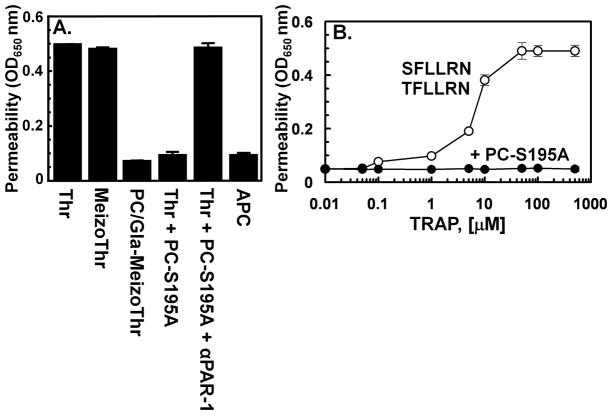Fig. 2.
The occupancy of EPCR by the Gla-domain of protein C switches the PAR-1-dependent signaling specificity of thrombin from a barrier-enhancing effect to a barrier protective response in HUVECs. The barrier protective effect of proteases (1 nM for thrombin and meizothrombin derivatives and 10 nM for APC) in HUVECs in response to proinflammatory stimuli (10 nM thrombin or 10 ng/mL LPS) with or without pretreatment of cells with PC-S195A (50 nM) and a function-blocking antibody to PAR-1 was monitored as described in Ref. 22. (B) The concentration dependence of the barrier permeability effect of the PAR-1 agonist peptides (either SFLLRN or TFLLRN) was monitored in the absence (○) or presence of 50 nM PC-S195A (●) as described in Ref. 20.

